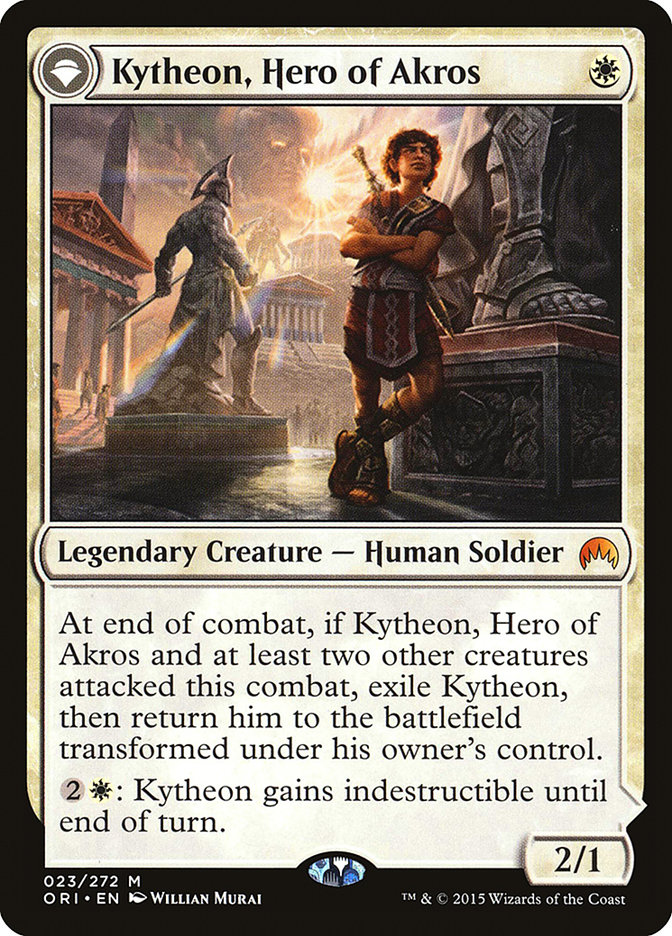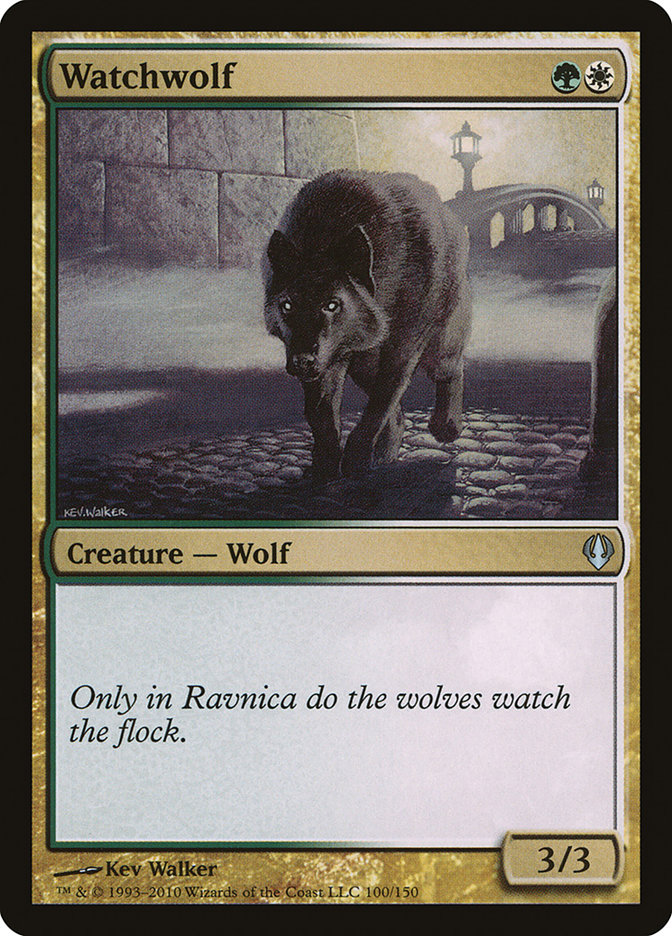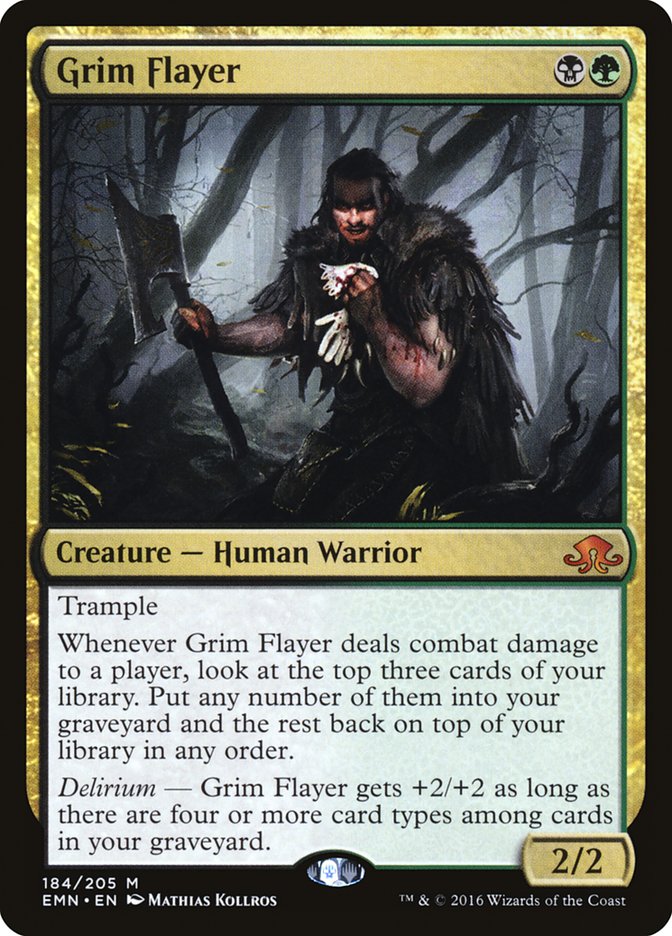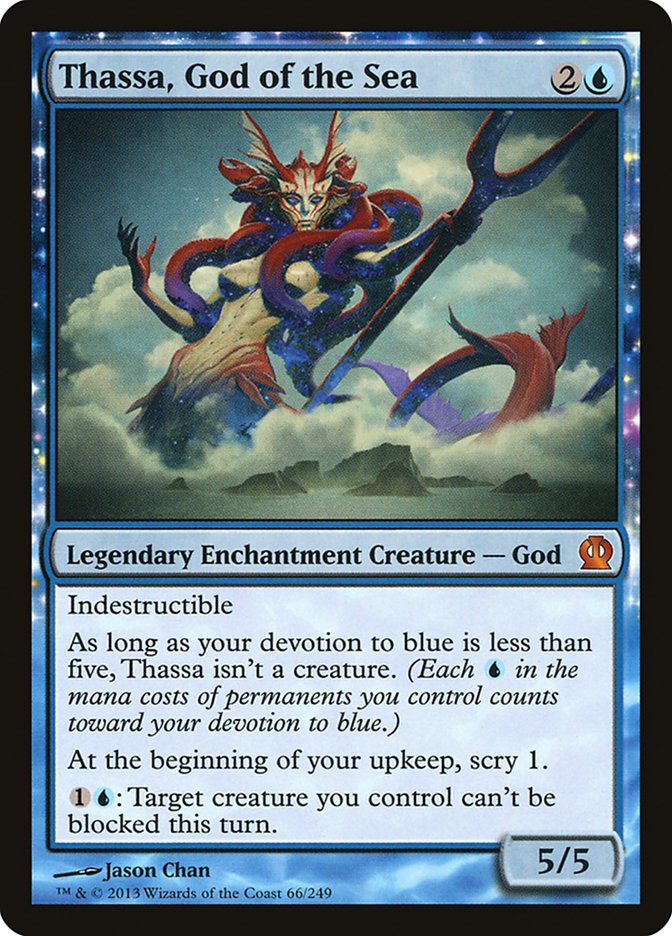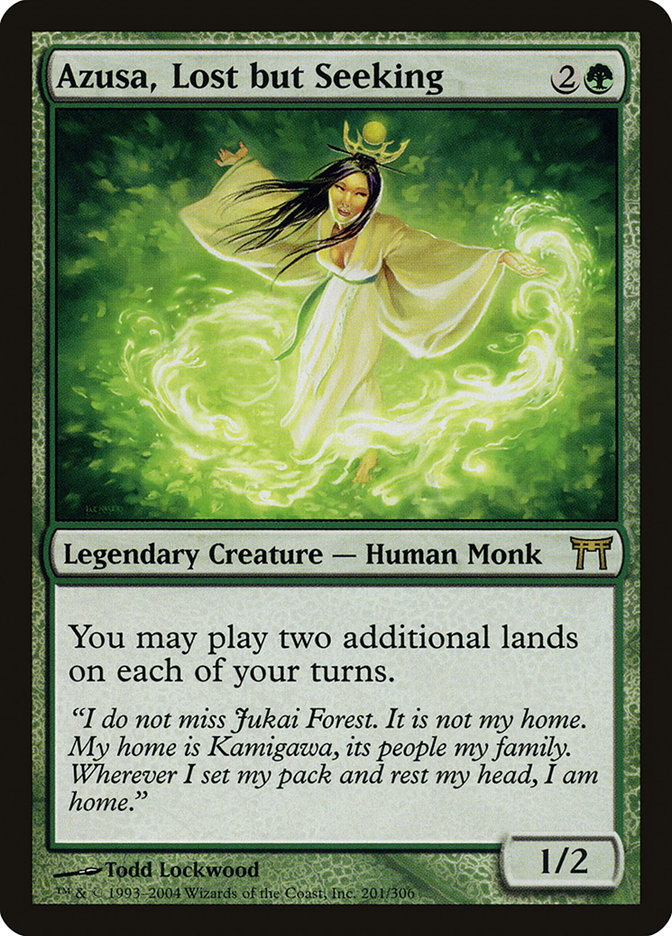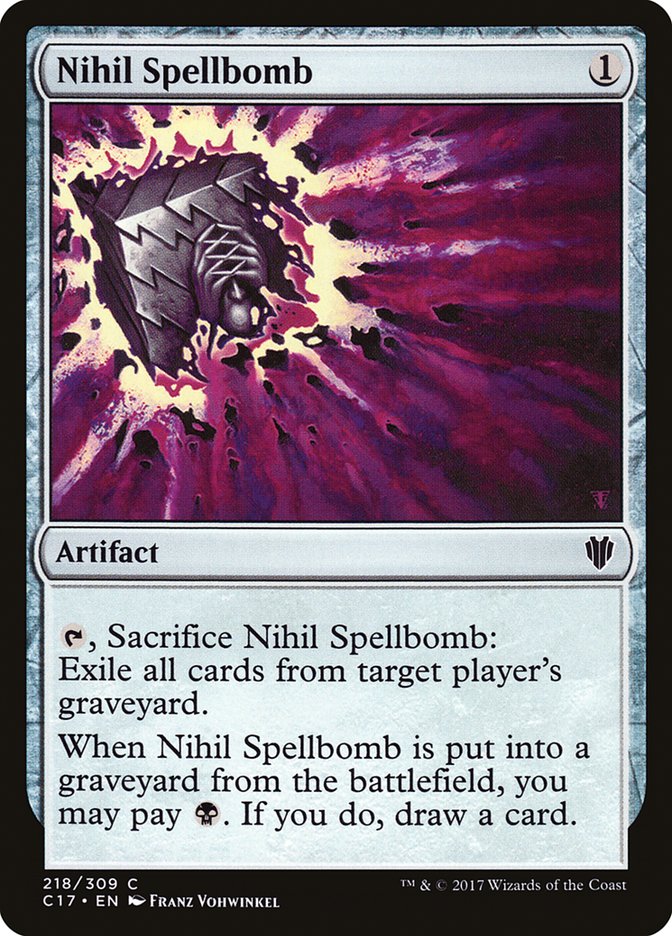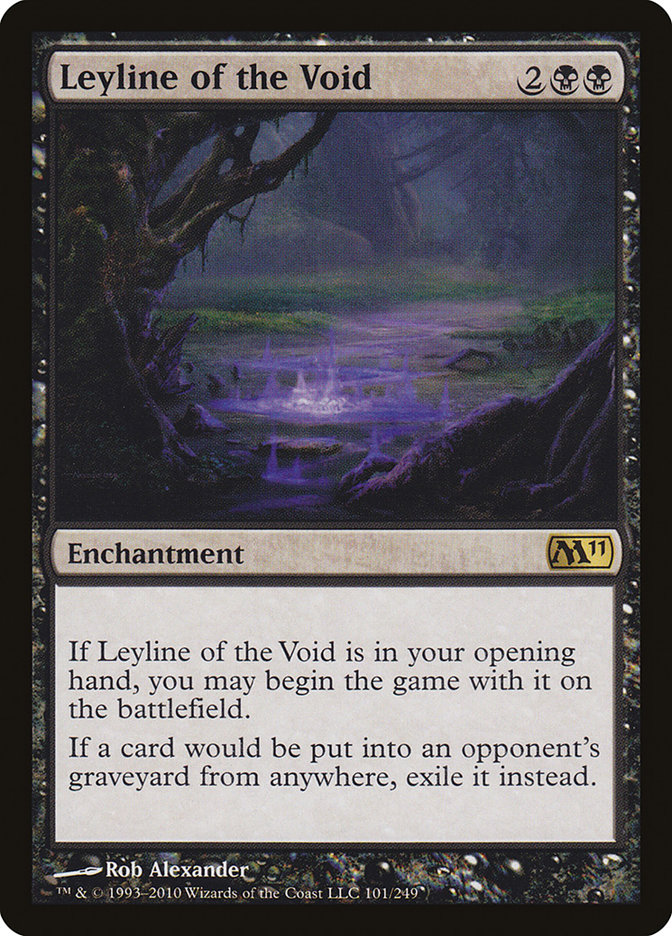With Modern set to undergo some drastic changes starting this week, last
weekend’s Open in Indianapolis was a last hurrah for me and Five-Color
Humans. Both Jace, the Mind Sculptor and Bloodbraid Elf encourage players
to fill their decks with cheap disruption, in particular Lightning Bolt,
which is a nightmare for a deck filled with small creatures, even if some
of those are well-positioned against cheap spells.
I didn’t put a high priority on innovating for this single tournament, and
there isn’t much flexibility in the Humans deck to begin with. I registered
the following list:
Creatures (37)
- 3 Meddling Mage
- 4 Noble Hierarch
- 3 Phantasmal Image
- 4 Champion of the Parish
- 4 Thalia, Guardian of Thraben
- 2 Kessig Malcontents
- 4 Mantis Rider
- 1 Kytheon, Hero of Akros
- 4 Reflector Mage
- 4 Thalia's Lieutenant
- 4 Kitesail Freebooter
Lands (19)
Spells (4)

Over the course of the weekend I was frequently asked about the singleton
Kytheon, Hero of Akros. Why that one drop over other options? I had played
two copies of Thraben Inspector in the Classic in Philadelphia so why would
I change?
As it turns out, the answer to this question leads to an interesting
thought exercise in how we evaluate cards. Simply put, Kytheon, Hero of
Akros has the highest upside of all the options for an additional one-drop
Human and it’s not particularly close. Transforming it into a planeswalker
can win games that Thraben Inspector and Experiment One can’t.
But as anyone who has played through a preview season knows, evaluating
cards solely based on their power level when at their best is a trap. Every
three months we get sucked into imagining the brokenness of casting Myr
Superion off of Burning-Tree Emissary without thinking about the times
where the Superions clog our hands. So we force ourselves to also think
about how bad a card is when it’s at its worst.
The range of outcomes between a card’s best case scenario and its worst
case scenario gives us a good idea of how powerful a card is, but the
picture is still incomplete. It’s important to get a sense of how difficult
it is to build a deck in which the card’s potential is maximized. If a card
demands that the rest of the deck be built around it, then it will only be
good if those other pieces exist in the format.
For example, Ancient Ziggurat is a very powerful card but demands a lot out
of your deck construction by placing a very low cap on the number of
non-creature spells you can play. Humans gets around this restriction by
having so many disruptive creatures like Thalia, Guardian of Thraben,
Kitesail Freebooter, and Reflector Mage. Because it takes a very specific
context to make Ancient Ziggurat function near its ceiling, I say it has a
high opportunity cost.
These three metrics–a card’s floor, its ceiling, and the opportunity cost
of putting it in a deck–are the primary means of evaluating its power
level. However, it’s rare that a card scores highly on all three metrics.
How do we choose between a card with high ceiling and a low floor to one
with a lower ceiling and a higher floor?
The reality is that both cards have their place, and the trickiest part of
card evaluation and deckbuilding is knowing when to play the high-risk card
versus when to play the low-risk card. Let’s go deeper into these three
concepts to see how you can be more systematic in finding the right cards
for your next deck.
Floor
In a strict sense, every card has a floor at or near a zero since there
will always be some corner case scenario where it’s uncastable or
irrelevant. So the most important thing to keep in mind when evaluating a
card’s floor is to imagine a reasonable range of likely scenarios. A card
like Tarmogoyf could be a two mana 0/1 which is horrible, but in practice
that almost never happens. The card is almost always a 3/4 or a 4/5, which
is an excellent rate and gives the card a very high floor.
And it is generally cards that are simple in design with a good rate that
have the highest floors. The floor of a card is what it does with no help
from other cards so it makes sense that standalone cards have a high floor
since they don’t depend on that help to be good. Watchwolf is always going
to be a two-mana 3/3, but Grim Flayer will sometimes be a 2/2 and sometimes
be a 4/4.
I’ve focused mostly on threats above, but this framework also works for
reactive spells like removal and counters. These cards have a floor that is
dependent almost entirely on how restrictive they are. Disallow and
Vraska’s Contempt can answer a much wider variety of threats than Essence
Scatter and Moment of Craving, which is why the latter pair don’t cost as
much.
Another way to guarantee a high floor is to include options. Modal spells
like the various Charms and the Commands will almost always do something
useful since you can choose whichever mode is best for a given situation.
Note that there are many abilities that are modal in nature, for example
cycling, kicker, and morph. All of these abilities gain their power by
increasing the number of options on a given card, thus making that card’s
floor rise.
From this we can see how the floor of a card is closely related to a deck’s
consistency. The more high floor cards a deck has the more often it will do
its thing and you’ll get to play a game of Magic, whereas a deck filled
with low floor cards will have a high fail rate. Thinking along these lines
it’s easy to see that cheap cantrips are among the cards in Magic with the
highest floor. From turn 1 to turn 20 it’s rarely a bad time to draw and
cast a Ponder or Preordain and few cards are better at increasing a deck’s
consistency.
So when is it important to put high floor cards in your deck?
The most obvious place is in decks that aren’t reliant on synergy. Most
midrange decks rely in the individual power level of their cards because
they play a blend of proactive and reactive cards and thus, don’t have
enough deck space to properly leverage most synergies. They use their
disruption to break up opposing synergies and force the game to be played
at the floor of the individual cards, so they need generic, high-rate
threats and broad removal.
However, don’t make the mistake of thinking that synergy decks should be
filled with low floor, high ceiling cards. Decks built that way will be
very powerful but incredibly inconsistent and/or highly vulnerable to
opposing disruption (think Oops All Spells in Legacy). All decks should
have a base of high floor cards for consistency’s sake. It’s for this
reason that the base of all good combo decks is a suite of card selection
spells.
The consistency of all decks is very important, so your core cards should
have a high floor so you can consistently execute some sort of game plan in
the face of disruption. For example, the most powerful draws that Elves in
Modern has involve going off on turn 2 with Heritage Druid and Nettle
Sentinel and playing most of your creatures, but in practice Nettle
Sentinel is among the worst creatures in the deck, and it’s better to trim
them rather than the less exciting but more consistent mana creatures,
Llanowar Elves and Elvish Mystic.
It’s not the most exciting way to build decks, but it’s the most effective.
Ceiling
Now we’re on to the exciting part. Seeing a deck fire on all cylinders with
all its components coming together in harmony is one of my favorite parts
of Magic, which is why you often see me playing combo and other
synergy-laden aggro decks. Tarmogoyf may be a great Magic card, but it’s a
lot less fun than attacking someone with a Thassa, God of the Sea on turn 4
or casting a lethal Tendrils of Agony on turn 3.
Unsurprisingly, where a high floor is typified by raw rate and midrange
decks, high ceiling cards are found in those that rely on synergy.
Mono-Blue Devotion was a great example of this, often described as a pile
of draft commons supporting Thassa and Master of Waves. The rest of the
deck was more powerful than it was credited, but I’d be lying if I said it
was just as easy to win games without those powerful payoffs than with.
Of course these kinds of cards go beyond powerful build arounds. Take, for
example, G/W Company in Modern. Many lists play a singleton Azusa, Lost but
Seeking, a card that has the potential to take the deck’s synergies to
another level, but when things aren’t going well is a small body with
little impact on the game. High ceiling cards are often used to give a deck
another gear when both players have a strong draw.
Of course, that other gear isn’t necessary when your normal gameplan is
good enough, so there is the potential for these cards to be win more as
well as hit their floor and be a detriment, which is why they are most
appropriate when used sparingly. Most decks have a few flex spots to play
with, and it’s those spots where high ceiling cards thrive. The last few
spots are often going to be weaker cards anyway, otherwise they’d already
be in the deck, so being able to get a huge effect from what are ostensibly
your worst cards is a huge benefit, and you won’t draw them frequently
enough to see their downside often.
This is why I went from Thraben Inspector to Kytheon, Hero of Akros in
Humans. The thirteenth one-drop is a flex spot that isn’t going to make
many appearances, so when it does I wanted the card that could have the
highest impact on the game, and that’s the one that can transform into a
planeswalker.
Of course, there are cards that come up even less than those in the
maindeck–sideboard cards! Successful sideboards are built on the backs of
high ceiling cards because you’re only bringing them in when their floor is
guaranteed to be high, so you might as well go for the most upside.
Narrowly powerful removal spells like Golden Demise and Chandra’s Defeat or
expensive threats that are a liability against aggressive decks all make
excellent sideboard cards.
There are some concessions made to having flexible sideboard cards so that
you can be prepared for a wide variety of matchups, but those concessions
are only made to the minimum amount necessary to have cohesive sideboard
plans and not a single card more because the ideal is to have the highest
potential cards possible in games 2 and 3.
Opportunity Cost
The last of my three metrics, opportunity cost, is the trickiest to define.
Essentially, it’s the level of constraint playing a certain card puts on
how you build the rest of your deck. A card like Anointed Procession is
powerful, but only in a very specific shell.
Modern is filled with cards that have high opportunity cost because the
format is large enough to be able to satisfy their high deckbuilding
constraints and unlock their full potential. Ancient Stirrings needs to be
in a deck with nearly all colorless cards but finds multiple homes in
Modern, to the point where there has been talk of banning the card. Same
for Mox Opal, Hollow One, and Restore Balance. Cards with a high
opportunity cost are often of the high ceiling variety since they depend on
the cards around them, but not always, as seen in the above example of
Ancient Stirrings.
Obviously the more restrictive a card’s mana cost the higher its
opportunity cost and vice versa, which is a major reason why Smuggler’s
Copter was so oppressive. Having that high a rate appear on a card that
could be played in any aggressive deck meant that it did see play in every
aggressive deck, irreparably damaging the diversity of aggressive decks in
Standard.
The central question to answer when thinking about the opportunity cost of
a card is “Is the payoff for my effort worthwhile?” If you’re going to jump
through some hoops to make a certain card work, then the result better be
significantly more powerful than what the rest of the format offers. A deck
like Merfolk in Modern compares unfavorably to Humans on that metric, since
it’s about as fast but with significantly less disruption, so unless
Spreading Seas is incredibly well-positioned I don’t see the point of
playing Merfolk.
The cards with the lowest opportunity cost are those that are good nearly
all the time, like cheap cantrips and those that reward you for simply
playing a normal game of Magic, like Tarmogoyf.
When Tarmogoyf was first printed you would often see players add Chromatic
Star or Evolving Wilds to their deck to pump it, but it quickly became
evident that those cards were unnecessary. Plenty of types hit the
graveyard organically so there’s no need to help it along at the cost of
playing weaker cards.
I don’t think any of these concepts are new to most experienced players,
but I often see them rely on one over the others in justifying adding or
removing a certain card without thinking about how they interact with each
other. You need to use all three in concert and within the context of your
deck to make an informed decision.
Consider the various options for graveyard hate in Modern. It’s a more
complicated process than picking the most powerful option in your colors.
Jund wants a high floor card that accrues value so it utilizes Nihil
Spellbomb most often.
Snapcaster Mage decks often go for Surgical Extraction because its ceiling
is higher there than elsewhere, which changes how you rate it relative to
the other options.
Then there’s Dredge, a deck that draws very few cards after its opening
hand, so playing Leyline of the Void makes sense since the floor of the
card, drawing it after your opening hand, is highly unlikely to occur while
the ceiling is incredibly high.
So as with everything in Magic, context is critical. This is a heuristic
meant as a guide, not a strict set of rules to be slavishly followed. But I
find having a systematic process for making complicated decisions helps
immensely in wading through the many variables and distilling the problem
to its core elements.
Magic is amazingly daunting in its complexity, so any way you have that can
reasonably simplify it will be helpful.


